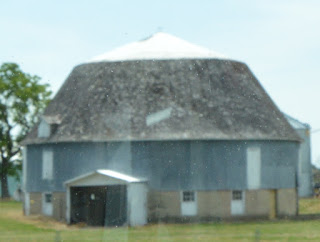 |
| LIRC |
The LIRC route began as two railroads: "the Madison & Indianapolis Railroad, which started business in 1838; and the Jeffersonville Railroad, which began operating in 1850. The railroads merged in 1866 and later became part of the Pennsylvania Railroad." (ProgressiveRailroading)
A Sept. 2013 Progressive Railroading article reports a "South Wind" project in which CSX would pay almost $100 million dollars to upgrade the line to accommodate 286,000-pound rail cars, as well as double-stack and high-cube equipment that is 20' 2" high. CSX wants to use this route because their Cincinnati-Louisville route "was nearing capacity, and the grades and curvature on the route constrained train lengths, tonnages and operating speeds. It wasn't practical to upgrade the route, CSX officials concluded. But upgrading the LIRC would be, they believed."
But their system map does not show trackage rights over this route. I found a July 2014 article that indicates the Surface Transportation Board was still studying the plan. The LIRC had spent $1.3 million to rebuild crossings so that it can run trains at 30 mph instead of 10 mph. The plan is being held up by John Drybread, Edinburgh's utility director, because the number of trains would increase from 6 to 15. But South Wind would increase train speeds from 25 to 45 mph. Increasing the speed offsets the increased number of trains in terms of total delay. And it about halves the wait time for a train. Since Downers Grove sees about 80 trains a day, I can tell you that if you are sitting in a car or an ambulance, it is the wait time for a train, not the number of trains, that John should be looking at. The train speeds in Downers were restricted last summer because of a station construction project and the longer wait times were noticeable as bigger traffic backups. The STB should require that CSX installs signaling equipment that is good enough to allow Edinburgh to be a "quite zone" and then allow the project to proceed. Again, my experience with the 5 grade crossings in Downers is that freight trains are not the problem, it is the commuter trains during the rush hour that cause more significant traffic backups.
I notice that the route goes through Columbus, IN, but Cummins is not one of the customers listed on their site unless the Cummins plant is in Walesboro Industrial Park. But the customer list must not be complete because I saw reference to sugar as a cargo used by Hershey. Yet Hershey was not on the list.
Update: A Flickr photo of their green and yellow livery.
 |
| Lukas Irons posted Everything old is new again, including a revamped railyard, all five tracks of it in Jeffersonville Indiana. The Louisville and Indiana Railroads new transload facility is all finished. Dutch Lane Yard has already attracted Lubrizol to the area and products will be transloaded here along with steel and other things. |
 |
| Photo by Douglas Weitzman Dawn, 4/6/16. Louisville & Indiana 22006 2003 in the Jeffersonville, In. yard. |
This CANNOT be good news for CSX's now-dead Illinois Sub between East STL and Olney.. The government gave the highball to CSX to upgrade and re-route major traffic over the L&I between Indy and Louisville, making the Illinois Sub even more redundant, considering UP interchange traffic destined for the south and east has to be processed at Avon anyway.
 |
| Photo by Douglas Weitzman, 8/28/2016 |
 |
| Photo by Douglas Weitzman The Roundel is honoring Indiana's 200th year. |
























































































































%20Oversize%20Load%20to%20CNRL%20-%20YouTube.png)